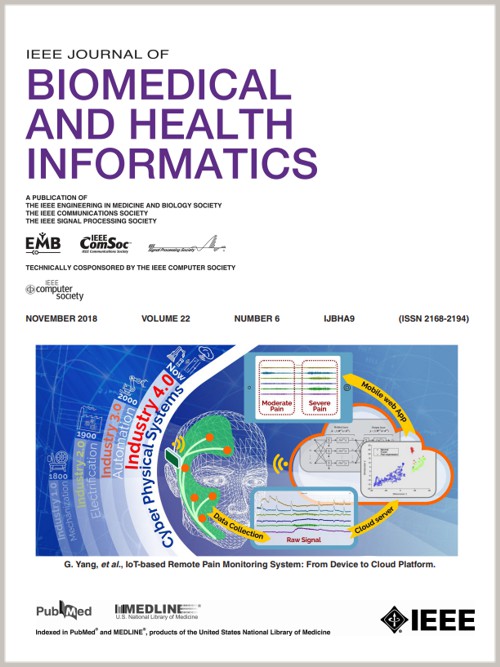Transformer3:基于 fMRI 的人脑功能表征的纯转换器框架。
IF 6.7
2区 医学
Q1 COMPUTER SCIENCE, INFORMATION SYSTEMS
IEEE Journal of Biomedical and Health Informatics
Pub Date : 2024-10-04
DOI:10.1109/JBHI.2024.3471186
引用次数: 0
摘要
有效的表征学习对于基于神经图像的个性化预测至关重要。利用隐藏在 fMRI 数据中的样本、空间和时间相互依存关系,已经进行了大量基于 fMRI 的个性化预测研究。然而,这些研究未能充分利用隐藏在 fMRI 数据中的有效信息,因为只分析了一种或两种类型的相互依存关系。为了充分利用三类相互依存关系有效提取人脑功能的表征,我们利用变换器捕捉输入数据中相互依存关系的强大能力,建立了一个基于变换器的纯粹框架--Transformer3。Transformer3 主要由三个转换器模块组成,其中批量转换器模块用于处理样本的相似性和差异性,区域转换器模块用于处理大脑区域之间复杂的空间相互依赖关系,时间转换器模块用于捕捉跨时间点的时间相互依赖关系。基于两个公开数据集的年龄、智商和性别预测实验证明了所提出的 Transformer3 的有效性。由于唯一的假设是输入数据中广泛存在样本、空间和时间上的相互依存关系,因此所提出的 Transformer3 可广泛用于基于多元时间序列的表征学习。此外,纯转换器框架也为理解基于 Transformer3 的预测模型背后的驱动因素提供了极大的便利。本文章由计算机程序翻译,如有差异,请以英文原文为准。
Transformer3: A Pure Transformer Framework for fMRI-Based Representations of Human Brain Function
Effective representation learning is essential for neuroimage-based individualized predictions. Numerous studies have been performed on fMRI-based individualized predictions, leveraging sample-wise, spatial, and temporal interdependencies hidden in fMRI data. However, these studies failed to fully utilize the effective information hidden in fMRI data, as only one or two types of the interdependencies were analyzed. To effectively extract representations of human brain function through fully leveraging the three types of the interdependencies, we establish a pure transformer-based framework, Transformer
3
, leveraging transformer's strong ability to capture interdependencies within the input data. Transformer
3
consists mainly of three transformer modules, with the Batch Transformer module used for addressing sample-wise similarities and differences, the Region Transformer module used for handling complex spatial interdependencies among brain regions, and the Time Transformer module used for capturing temporal interdependencies across time points. Experiments on age, IQ, and sex predictions based on two public datasets demonstrate the effectiveness of the proposed Transformer
3
. As the only hypothesis is that sample-wise, spatial, and temporal interdependencies extensively exist within the input data, the proposed Transformer
3
can be widely used for representation learning based on multivariate time-series. Furthermore, the pure transformer framework makes it quite convenient for understanding the driving factors underlying the predictive models based on Transformer
3
.
求助全文
通过发布文献求助,成功后即可免费获取论文全文。
去求助
来源期刊

IEEE Journal of Biomedical and Health Informatics
COMPUTER SCIENCE, INFORMATION SYSTEMS-COMPUTER SCIENCE, INTERDISCIPLINARY APPLICATIONS
CiteScore
13.60
自引率
6.50%
发文量
1151
期刊介绍:
IEEE Journal of Biomedical and Health Informatics publishes original papers presenting recent advances where information and communication technologies intersect with health, healthcare, life sciences, and biomedicine. Topics include acquisition, transmission, storage, retrieval, management, and analysis of biomedical and health information. The journal covers applications of information technologies in healthcare, patient monitoring, preventive care, early disease diagnosis, therapy discovery, and personalized treatment protocols. It explores electronic medical and health records, clinical information systems, decision support systems, medical and biological imaging informatics, wearable systems, body area/sensor networks, and more. Integration-related topics like interoperability, evidence-based medicine, and secure patient data are also addressed.
 求助内容:
求助内容: 应助结果提醒方式:
应助结果提醒方式:


